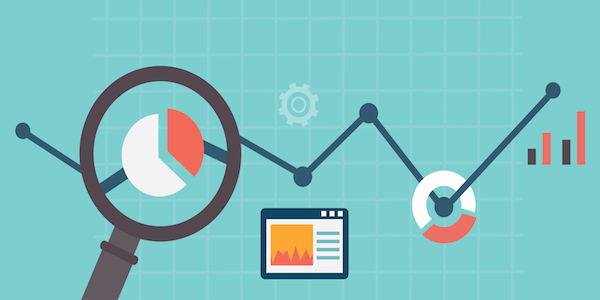Top Tips for Using Brand Tracking to Identify New Market Opportunities
Keeping a firm competitive and relevant is a daily task. Companies that are proactive in finding new market possibilities and responding to changing customer tastes will succeed. B2B brand tracking is a strong aspect that may aid in this quest. It enables businesses to track how their brand is regarded in the market, keep up with rivals, and, most significantly, find new market prospects.
Table of Contents
What is brand tracking in marketing?
Brand tracking in marketing is the process of monitoring and measuring how a brand is perceived by its target audience over time. It involves collecting data on brand awareness, association, sentiment, loyalty, and preference to evaluate brand performance, compare it with competitors, assess the impact of marketing campaigns, identify market trends, and inform brand strategy. It provides insights to measure branding effectiveness, track changes in perception, and make informed decisions for brand improvement.
How do you track brand success?
To track brand success, businesses can employ several methods:
- Measure brand awareness through surveys and website/social media tracking.
- Assess brand perception and associations by gathering consumer feedback.
- Monitor customer satisfaction, loyalty, and retention through surveys and loyalty program data.
- Analyze market share and competitors to understand the brand’s position.
- Track social media engagement, sentiment, and online mentions.
- Evaluate financial performance and brand equity.
- Collect customer surveys and feedback for direct insights.
- Develop and monitor brand-specific KPIs.
- Conduct brand tracking studies periodically.
- Analyze sales and revenue data to assess brand impact.
By utilizing these approaches, businesses can gauge brand performance, identify areas for improvement, and make informed decisions to drive brand success.
Choose the Right Metrics

To successfully uncover new market opportunities, you must track the appropriate KPIs. These indicators should be in line with your goals and give relevant information. Measuring the percentage of your target market that acknowledges your brand is one of the most important KPIs to consider. Increased brand recognition may suggest expanded market potential.
Monitor consumer attitudes regarding your brand. A good reputation might help you enter new market areas. Monitor client retention and satisfaction to uncover upselling and cross-selling possibilities.
Examine how your competitors fare in the market. Identifying performance gaps might indicate possible market opportunities for your business. Keep an eye on industry developments and changes in customer behaviour. Early detection of developing trends can lead to new possibilities.
Utilise Social Media Listening
Social media is a goldmine of information. By employing social media listening tools, you can track conversations, mentions, and sentiments related to your brand and industry. This can help you uncover potential market opportunities and emerging trends.
For instance, if you notice a surge in social media discussions about a particular product or service that your company can provide, it’s a clear sign of a new market opportunity. Additionally, social media can provide real-time feedback, enabling you to adjust your strategies quickly in response to consumer preferences.
Segment Your Data for Brand Tracking
Effective brand tracking relies heavily on segmentation. Instead of looking at your data as a whole, divide it into various chunks. This can assist you in identifying pockets of possible opportunities that may be missed when studying bulk data.
Demographics, geographic location, psychographics, and purchasing behaviour can all be used to segment a market. This allows you to identify specialised markets or unmet requirements that your brand can effectively address.
Regularly Benchmark Against Competitors
Comparing your brand’s performance to that of rivals is an effective approach to identifying market prospects. Benchmark your brand’s metrics against those of your rivals regularly to acquire insight into your relative strengths and flaws. If you routinely beat your competition in some areas, you may use those advantages to gain greater market share or expand into other markets.
In contrast, identifying areas where your rivals thrive might reveal potential for improvement or expansion. If your competition, for example, has a significant presence in a given location or with a specific demographic, this might serve as a target for your market expansion efforts.
Stay Agile and Responsive
It is critical to be nimble and responsive to new possibilities in a fast-changing business environment. Prepare to swiftly change your strategy as you collect and evaluate data through brand tracking. This flexibility can assist you in seizing chances and staying ahead of the competition.
For example, if you detect a growing demand for environmentally friendly items, your firm might pivot to meet this need by manufacturing sustainable products. Being able to adapt quickly to changes in customer preferences might provide you with a competitive advantage.
Leverage Advanced Analytics
Advanced analytics tools and techniques can take your brand tracking efforts to the next level. Machine learning and artificial intelligence can process vast amounts of data quickly and provide predictive insights. By using these technologies, you can forecast market trends and identify opportunities before they become mainstream.
These tools can also help you uncover hidden patterns and correlations in your data that may not be immediately apparent. For example, they can identify the association between certain consumer behaviours and market opportunities, helping you make data-driven decisions.
Monitor Customer Feedback

When it comes to spotting new market prospects, your clients are a useful source of information. Gather and assess consumer feedback via questionnaires, reviews, and face-to-face contacts. This input may help you understand their pain areas, requirements, and goals, allowing you to modify your products and services to fulfil their requests.
Furthermore, client input may assist you in identifying areas for development and innovation. Consider consistent inquiries or ideas as possible market possibilities for your brand.
Experiment and Innovate
Finding new market prospects frequently requires trial and creativity. Don’t be scared to experiment with new methods, goods, or marketing techniques. Test these activities and collect data to determine their influence on the success of your brand.
You can discover new opportunities for development and adaptability by taking a proactive attitude to experimentation and innovation. Some of your tests may uncover previously unforeseen business prospects.
Conclusion on Brand Tracking in Marketing
You can maximize the potential of brand tracking to identify new market opportunities by defining clear objectives, tracking the right metrics, leveraging social media listening, segmenting your data, benchmarking against competitors, remaining agile, collaborating across departments, using advanced analytics, monitoring customer feedback, and embracing experimentation. You may position your brand for development and sustained relevance in an ever-changing marketplace by doing so.

David is a dynamic, analytical, solutions-focused bilingual Financial Professional, highly regarded for devising and implementing actionable plans resulting in measurable improvements to customer acquisition and retention, revenue generation, forecasting, and new business development.









